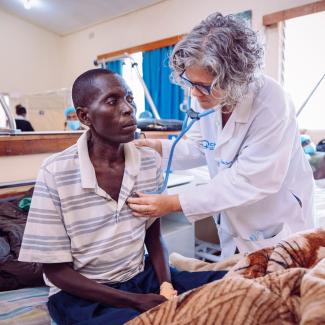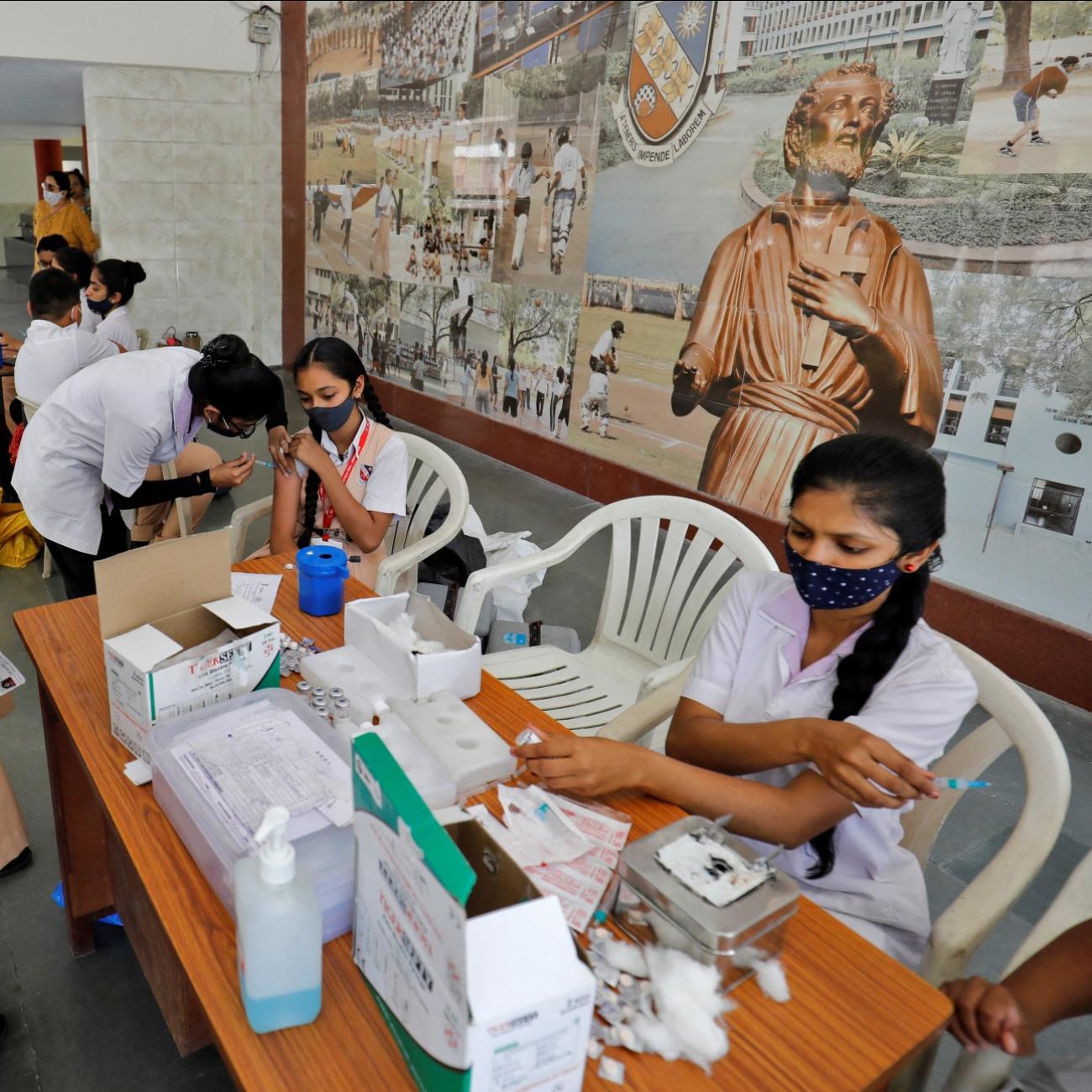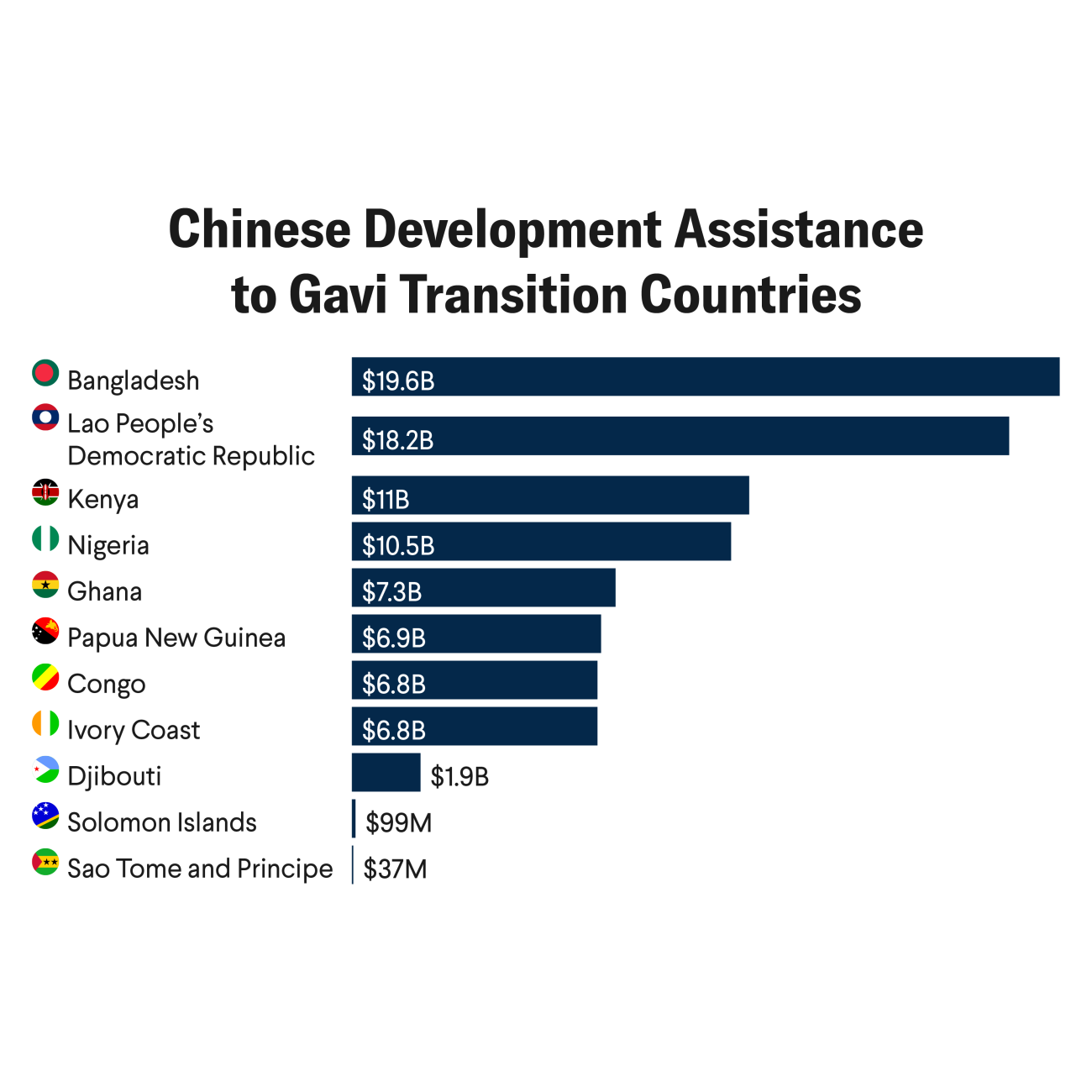The COVID-19 pandemic exposed the dangers of relying on foreign supplies of vaccines during public health emergencies. That experience has motivated low- and middle-income countries (LMICs) around the world to develop and produce their own vaccines. The desire is particularly strong among member states of the African Union, which launched an ambitious initiative to scale-up vaccine production on the continent over the next 15 years. In December 2023, the Gavi Vaccine Alliance promised to invest $1.8 billion to support that goal.
It will take more than money, however, to build and sustain vaccine manufacturing in countries without robust biotechnology sectors. As a developing country that became the world's largest vaccine producer, insights from India can inform efforts to expand global vaccine capacity.
"Of One's Own Country"
India's independence movement in the early twentieth century embraced swadeshi, a Sanskrit term meaning "of one's own country." Mahatma Gandhi described swadeshi as the soul of self-rule because it envisioned domestic manufacturing as necessary to curb dependency on others.
Insights from India can inform efforts to expand global vaccine capacity
Driven by that objective, a wave of pharmaceutical manufacturing companies launched. Among them was Cipla, founded in Mumbai (then Bombay) in 1935 and now a multinational company. The success of Cipla and other companies built on a foundation laid by the British colonial government's establishment of entities, including the Pasteur Institute of India in Coonoor and the Haffkine Institute for Training, Research & Testing in Mumbai. Those institutes produced vaccines against smallpox, rabies, cholera, influenza, and other diseases. When Britain fought World War II, it withdrew funds for the institutes, and some fell into disrepair.
In contrast, companies that produced and sold medicines domestically survived as India's population grew in numbers and wealth. Seeing a market, several large European and American pharmaceutical companies set up Indian subsidiaries, such as Bayer, Burroughs Wellcome India, and Merck. More local companies sprouted as well. The failures and successes of various firms in the first half of the century mattered less than the development of the legion of highly trained Indian chemists and biologists anxious to learn about new technologies that built India's pharmaceutical sector after World War II.
Independence Realized
After India gained independence in 1947, the central government prioritized domestic drug and vaccine manufacturing, to improve the health of the young nation and reduce pharmaceutical costs. Public-sector investment revived institutes and companies created before independence, which created additional capacity. By 1971, India had more than 19 public-sector institutes manufacturing vaccines and several large public-sector enterprises, such as Indian Drugs and Pharmaceuticals Limited and Hindustan Antibiotics Limited, making generic medicines.
Crucially, some firms produced raw materials—known as active pharmaceutical ingredients—so that other companies need not rely on imported production inputs. Other efforts centered on research so that India could strengthen its scientific workforce and manufacture its own medicines rather than simply replicate the manufacturing processes of those created abroad. Opened in 1951, the Central Drug Research Institute remains one of the country's premier scientific organizations.

Public support for education and research drove a second wave of private investment in India's pharmaceutical sector. The creation of the Department of Biotechnology (DBT) in 1986 advanced the ecosystem for vaccine production. The DBT provided financial and other support to vaccine development and manufacturing that used new technologies and created biotech training programs across Indian universities and scientific institutes.
The DBT's vaccine-support programs focused on developing new vaccines for cholera, Japanese encephalitis, neglected tropical diseases, rabies, and tuberculosis. Public investments in science and workforce development coupled with private entrepreneurial spirit launched successful companies, such as Biological E and the Serum Institute of India, with Serum Institute becoming one of the world's largest manufacturer of vaccines.
Policies on intellectual property also aided India's rise as a pharmaceutical manufacturing powerhouse. In 1970, the Indian Patents Act paved the way for the country's renowned generic drug industry by barring patents on drug and vaccine products. Several manufacturing plants once owned by Western pharmaceutical companies began to make and sell generic products.
In joining the World Trade Organization's TRIPS Agreement in the mid-1990s, India agreed to recognize patents on pharmaceutical products, a change completed by 2005. By then, however, the Indian generic industry was so advanced that it could thrive without overriding patents. Generic manufacturers could secure licenses from innovating companies willing to share their intellectual property in return for royalties or act as local producers for global companies hoping to access the Indian market.
Demand also drove India's success in vaccine production. The country's population has quadrupled since 1947. All the while, the government has covered the cost of basic immunization through the Universal Immunization Program, providing companies with a large, reliable market.
Demand also drove India's success in vaccine production
Starting in the early 2000s, the domestic and international contexts for the Indian vaccine manufacturing industry changed. India adopted economic liberalization policies that encouraged companies to connect with global value chains through international partnerships. Simultaneously, the international market for vaccines experienced upheaval. In the late 1990s, multinational pharmaceutical companies lost interest in manufacturing vaccines important to the World Health Organization's Essential Program on Immunization. That change resulted in global shortages of some vaccines.
Those developments helped India become an important vaccine exporter in the early 2000s, especially as UNICEF and Gavi sought cheaper vaccines for their immunization programs in LMICs. With that market expansion came new players, such as the Bill & Melinda Gates Foundation, that helped Indian manufacturers upgrade their technology and begin producing biologics and other pharmaceutical products.
Such efforts had systemwide effects. Biological E, Serum Institute of India, and other private vaccine manufacturers became trusted partners for multinational companies and regular beneficiaries of grants from international development banks, allowing them to grow more. India's regulatory system became more capable of evaluating the safety and efficacy of new technologies. The Indian financial sector increasingly offered vaccine manufacturers the capital they needed to expand.
India's vaccine innovation and manufacturing capabilities were on display during the COVID-19 pandemic. The Serum Institute and Biological E took on production of COVID-19 vaccines owned by AstraZeneca and Johnson & Johnson. The Serum Institute helped resolve production problems with Novavax's vaccine. India was also home to vaccine innovations, such as a needle-free vaccine developed by Zydus Cadila and a unique mRNA vaccine candidate from Gennova Biosciences that does not require ultracool storage. Although such products have yet to hit the global market, they demonstrate that India is no longer a mere vaccine factory.
Lessons Learned
It would be foolish to expect other countries to follow precisely in India's footsteps. Nonetheless, the Indian experience holds lessons for efforts in Africa, Asia, and Latin America to develop domestic vaccine production. Foremost, India's vaccine-producing companies relied on the surrounding bioscience ecosystem. Rather than focus on one or two initiatives within specific countries, governments, donors, and investors should support networks that grow a region's scientific workforce, strengthen its regulatory systems, and produce a range of pharmaceutical products. That network should include production of the active pharmaceutical ingredients that vaccine and drug makers need.
The enthusiasm that Gavi, the European Union, the World Bank, and international development institutions have for domestic manufacturing could accelerate the growth of such an ecosystem, which developed over decades in India. But donors can be fickle, so it is imperative to recognize the major role that sustained public funding played in India. Governments should commit to vaccine projects as long-term national security and economic development investments and underwrite the education and training of scientists.
That said, many of India's publicly funded projects have been fraught and short lived. Some institutes struggled to upgrade technology or increase production because government officials, rather than the heads of the facilities, oversaw investment and hiring decisions. A recent flop is India's public-sector vaccine complex, HLL Biotech Limited, which lay idle when needed during the pandemic. That failure teaches that the executive teams running government-owned vaccine manufacturing facilities should have autonomy from government agencies.
Executive teams running government-owned vaccine manufacturing facilities should have autonomy from government agencies
The successful plants are those that couple the strong workforce and ecosystem created by public investments with the discipline and decision-making speed of the private sector. New vaccine projects in Africa, Asia, and Latin America should attempt to raise private capital to supplement investments made by governments and international institutions.
India's domestic market is much bigger than other LMICs. Its population is, for example, nearly 24 times larger than that of South Africa, home to the WHO's effort to build mRNA vaccine manufacturing on the African continent. To churn a sustainable profit, companies should prepare to sell beyond their borders by gathering intelligence on what drugs and vaccines countries within the region need and how they can be competitive within each market. Such work is a natural fit for the profit-driven private sector, rather than governments or intergovernmental groups, such as the African Union.
Finally, India's experience illustrates that individual enterprise outcomes do not determine overall success. Indian manufacturers came and went, sometimes through no fault of their own. As national governments and financiers seek to build capacity in Africa and elsewhere, they need to be as patient as they are strategic. That effort is not suited for a fail-fast approach—a trend in development circles drawn from the tech industry that favors terminating efforts that do not immediately deliver positive results. Such thinking could doom prospects by rewarding the wrong incentives, such as boosting vaccine production through fill-and-finish contracts under which domestic plants essentially bottle vaccines produced elsewhere.
Expanding vaccine manufacturing capacity in LMICs can support pandemic response and improve population health around the world. But, as India's experience shows, sustainable vaccine manufacturing requires strategic commitments to developing the workforce, building a strong bioscience ecosystem, sustaining and expanding markets, and motivating the private sector to invest and innovate.
EDITOR'S NOTE: This article is part of a series on efforts to increase pharmaceutical production in developing countries guest-edited by Amy Maxmen. The other articles in the series can be found here.



